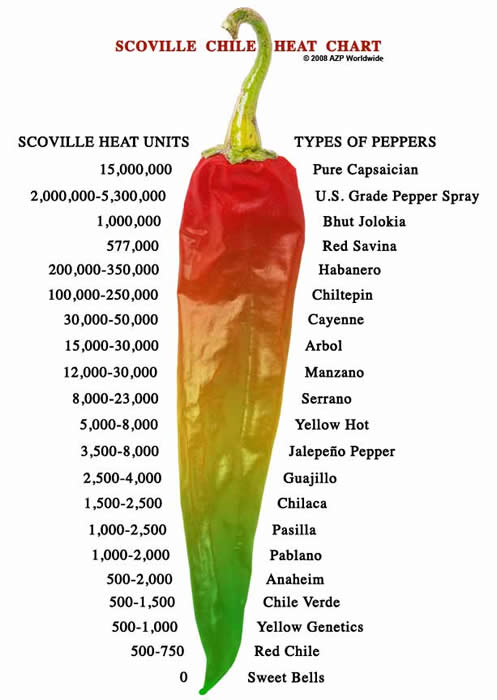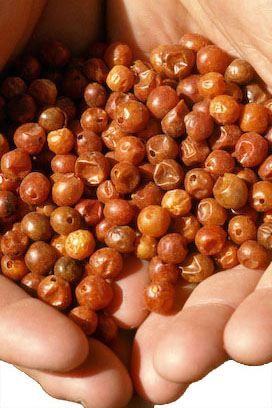How Is Pepper Heat Measured?
(Please contact us PRIOR to any use of our copyrighted material. Thank you!)
How do you measure pepper heat? How hot is your chile? The Scoville Heat Unit Scale (see chart to the right), also referred to as the Scoville Scale, or Scoville Chart, is a long-standing measure of the hotness of chile peppers. Capsaicin is a chemical compound that stimulates chemical receptor nerve endings in the skin. The number of Scoville heat units (SHU) indicates the amount of capsaicin present in a particular pepper. The scale was developed in 1912 by American chemist, Wilbur Scoville, specifically to rate the pungency or heat of peppers. Officially, his method was known as the Scoville Organoleptic Test. Try repeating that three times!
Here's the key: With the original Scoville scale method, a solution of a pepper extract is diluted in sugar syrup until the heat is no longer detectable to a group of tasters. The amount of dilution (pepper & sugar syrup) provides a measure on the Scoville Scale. Therefore, a bell pepper or other sweet pepper - which contains no capsaicin - has a Scoville rating of zero, or no detectable heat, even when it's undiluted. On the other end of the spectrum, the hottest chiles, such as habanero and chiltepin peppers, have a rating of 200,000 or higher which indicates their extract has to be diluted 200,000 times before the capsaicin heat is undetectable. The shortfall of the Scoville scale test for peppers is that it relies on human perception, which certainly is subjective.
Today, spice and pepper heat is measured by a more scientific method known as High Performance Liquid Chromatography or HPLC. A mathematical formula is then applied to weigh peppers by their ability to create a sensation of heat. This method does not use Scoville Heat Units (SHU) but measures something called ASTA Pungency Units. In this process, one part of capsaicin per million translates to 15 Scoville units. And, this system says that ASTA Pungency Units can be multiplied by 15 to be reported as Scoville units. Yet, this conversion is approximate. Leading spice and pepper experts say there is consensus that the ASTA units results in 20–40% lower heat than the Scoville method provides.
Still confused? Our solution: Skip the science and math and simply perform your own tests by enjoying what chiles have to offer - titillating taste and that kick-yo-butt heat!
|


